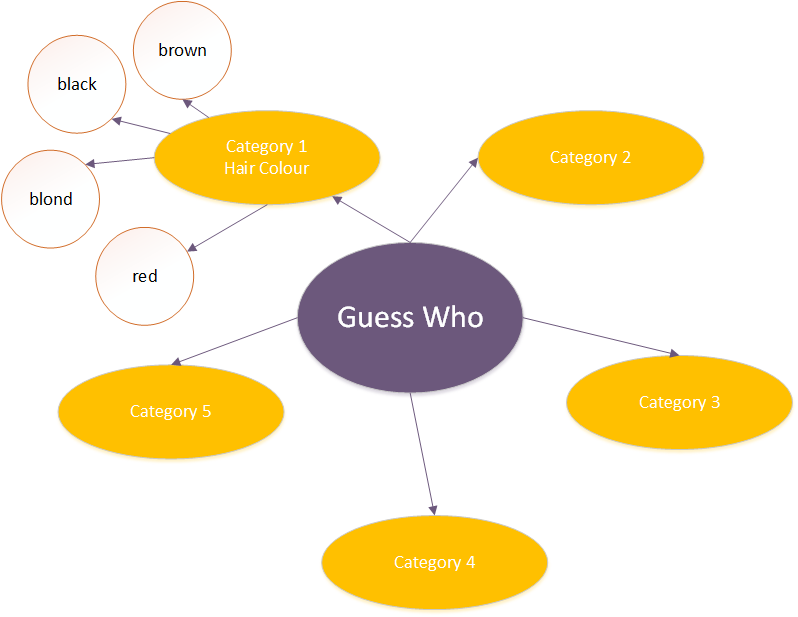Introduction
‘Guess Who’ is a well known children’s game that can help us to think about data, categorisation and pattern matching.
Materials
- pen/pencil
- paper
- Coloured pens/pencils/crayons
- Assorted items for disguises.
- Smartphone/tablet or similar to take digital photographs (optional)
- Optional Blank Guess Who board (download Word alternative)
Activity
-
- Start by planning your board. What kinds of things help you tell people apart? These are your categories of information. Write down 5 categories that you want to use on your board. One example might be hair colour.
- In each category you can have different values. For each of your categories write down some possible values. For hair colour you might write down, blond, brown, black, red).
- It can help to draw a diagram to plan your game like the one below.

- You are now going to create your guess who characters. You need to think about how you show some of your categories on each of your characters. For example will each character have a different hair colour?
- You can create your characters in different ways
- Use available materials to take pictures of your family or classmates in disguise. For example you can think about using glasses, jewellery, hats, and fake moustaches
- You can draw each character
- You can search the internet for pictures of people
- Make your board and play guess who with your class.
What are we learning?
- You created categories for your board. When we think about understanding data, one of the first steps we take is to try and categorise it. Normally 1 set of information contains lots of different categories.
- Each of your categories had different values. This is also normally what we find in data. For example if you were thinking about your favourite songs you might have a characteristic called “Title” and each song would have a different title.
© Data Education in Schools, University of Edinburgh, 2024. This resource is licensed CC BY-NC 4.0, unless otherwise indicated.



